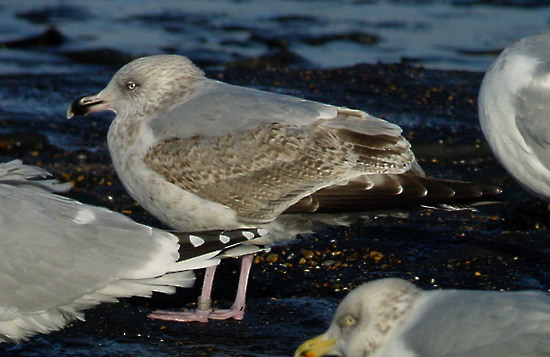 Herring Gull- Zilvermeeuw (argentatus & argenteus)
Herring Gull- Zilvermeeuw (argentatus & argenteus)
(last update:
Herring Gull plumages:
hg 1cy July
hg 1cy August
hg 1cy September
hg 1cy October
hg 1cy November
hg 1cy December
hg 2cy January
hg 2cy February
hg 2cy March
hg 2cy April
hg 2cy May
hg 2cy June
hg 2cy July
hg 2cy August
hg 2cy September
hg 2cy October
hg 2cy November
hg 2cy December
hg 3cy January
hg 3cy February
hg 3cy March
hg 3cy April
hg 3cy May
hg 3cy June
hg 3cy July
hg 3cy August
hg 3cy September
hg 3cy October
hg 3cy November
hg 3cy December
hg sub-ad January
hg sub-ad February
hg sub-ad March
hg sub-ad April
hg sub-ad May
hg sub-ad June
hg sub-ad July
hg sub-ad August
hg sub-ad September
hg sub-ad October
hg sub-ad November
hg sub-ad December
hg ad January
hg ad February
hg ad March
hg ad April
hg ad May
hg ad June
hg ad July
hg ad August
hg ad September
hg ad October
hg ad November
hg ad December
Herring Gull H-1172113cy (argenteus), December 14 2003, Westkapelle, the Netherlands (51.33N 03.25E).
This Belgium 3cy argenteus was ringed as pullus on July 09 2001 Zeebrugge (51.20N 03.11E).
From June to October, a complete moult
will bring 3cy argenteus in so-called "third winter"
plumage. From October onwards, when the complete moult is finished, the
head shows extensive 'winter streaking', mottled brown contrasting with
the white breast as in some birds (as an executioner's hood). The
scapulars and mantle are pale adult-like grey, although a few feathers may
reveal the 3cy age-class and have a brown pattern near the tip.
By the end of the complete moult (October), all wing-coverts have been
replaced, most to plain grey feathers in typical argenteus. But
it's very common to find immature patterns on the wing-coverts and
tertials, often be found in the lower tertials, greater coverts and outer
lesser coverts (the carpal edge).
By November, all primaries have been replaced for third generation flight
feathers. The first inner primaries were dropped by late May and the outer
primary P10 was dropped by late August. The primary moult is completed by
late-October in argenteus, when the new outer primary P10 is fully
grown. Argentatus, especially from the far northern populations,
may show a delayed primary moult timing.
The third generation inner primaries are clearly adult-like, with the
P1-P4 plain grey with a white tip. The outer-wing shows a clear black
triangle, extending on the greater primary coverts. From P4 outwards, the
primaries show a black sub-terminal band. The white primary tips are
obvious in the inner primaries, but often smaller on P9 and P10. P10 has a
small white mirror (lacking in some birds). The new third generation
tail-feathers are white, with various clear immature black markings. The
iris is pale brown-yellow, but may turn darker in winter, especially in
nominate argentatus from the Baltic states.
